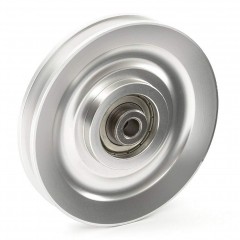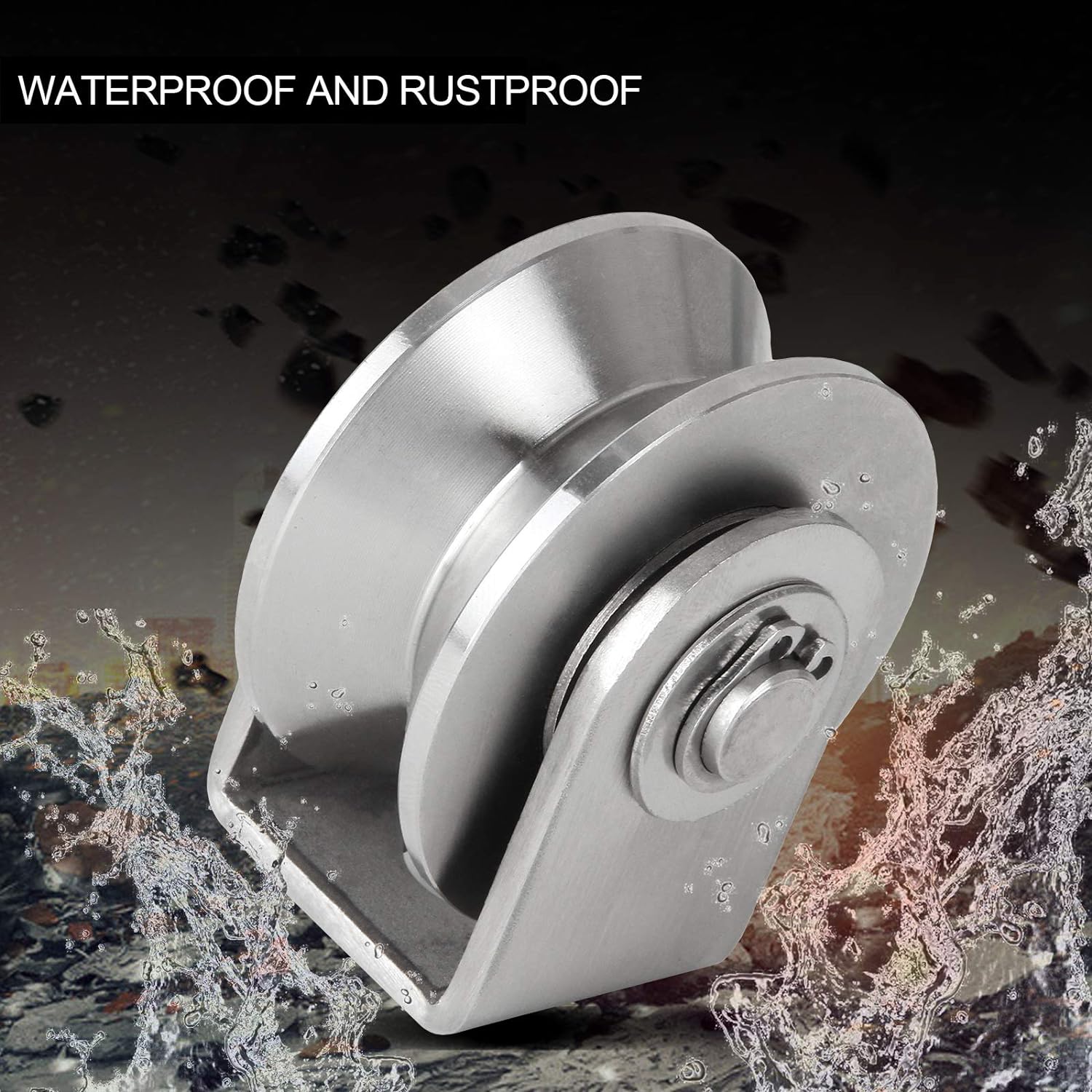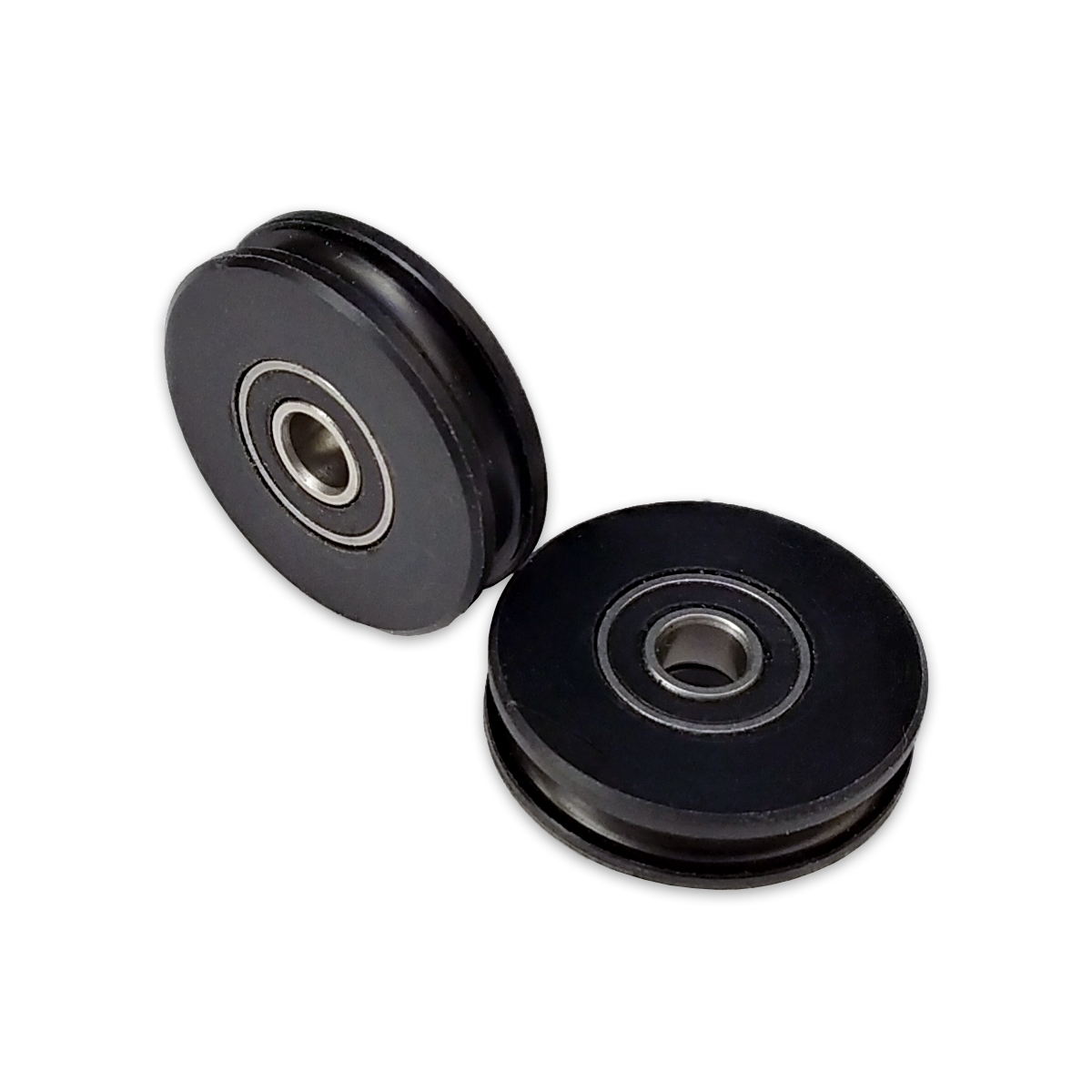Product Description
Hot Sale Lagging Rubber Sheet Pulley Grooved Drum Coated Conveyor Roller Drum Pulley for Energy & Mining
Product Description
The drum is the main component that transmits power. It is divided into 3 types according to their load-carrying capacity: light, medium and heavy.
Light: Bearing aperture 80-100mm, the shaft and hub are single-width plate welded cylinder structure connected by single key.
Medium: Bearing aperture 120-180mm, the shaft and hub are expansion sleeve connection.
Heavy: Bearing aperture 200-220mm, the shaft and hub are expansion sleeve connection, and the drum body is cast-welded structure.
Conveyor pulley stays at 2 ends of belt machine. The pulley can be divided into 2 categories: Driving pulley and averting pulley, driving pulley is the main part for transmitting the power and there are 2 kinds of pulley sets: Smooth surface and rubber surface, and rubber surface can be classified into smooth rubber surface, herringbone rubber surface and CHINAMFG rubber surface to meet different technical requirements. Averting pulley can be classified into smooth rubber surface and smooth steel surface.
Technical Parameters
| Driving Pulley (rubber surface) | |
| Belt Width | Standard Diameter of Pulley |
| 500 mm | 500mm |
| 650 mm | 500mm,630 mm |
| 800 mm | 500mm,630mm,800mm,1000mm,1250mm,1400 mm |
| 1000 mm | 630mm,800mm,1000mm,1250mm,1400 mm |
| 1200 mm | 630mm,800mm,1000mm,1250mm,1400 mm |
| 1400 mm | 630mm,800mm,1000mm,1250mm,1400 mm |
| 1600 mm | 630mm,800mm,1000mm,1250mm,1400 mm |
| 1800 mm | 630mm,800mm,1000mm,1250mm,1400 mm |
| 2000 mm | 800mm,1000mm,1250mm,1400 mm |
| 2200 mm | 1000mm,1250mm,1400 mm |
| 2400 mm | 1000mm,1250mm,1400 mm |
| Bend Pulley (smooth surface & rubber surface) | |
| Belt Width | Standard Diameter of Pulley (mm) |
| 500 mm | 250,315,400,500 |
| 650 mm | 250,315,400,500,630 |
| 800 mm | 25,031,540,050,063,000,000,000,000 |
| 1000 mm | 250,315,400,500,630,000,000,000,000,000 |
| 1200 mm | 250,315,400,500,630,000,000,000,000,000 |
| 1400 mm | 315,400,500,630,800,000,000,000,000 |
| 1600 mm | 400,500,630,800,100,000,000,000 |
| 1800 mm | 400,500,630,800,100,000,000,000 |
| 2000 mm | 500,630,800,100,012,000,000 |
| 2200 mm | 630,800,100,012,501,000 |
| 2400 mm | 800,100,012,501,400 |
| Pulley Standard | |
| Brand | SPD |
| Specification | SPD-CP-0001 |
| Certificate | ISO/BV/SGS |
| Standard | CEMA/JIS/DIN/Australia |
| Application | Coal mining industry, cement, steel, harbour etc. |
| Place of Origin | HangZhou City , ZheJiang Province , China |
| Material Feature | Water, Wear, Dust resistance |
| Supply capacity | 80PCS/month |
| Management system | ISO 9001:2008,ISO 14001:2004,GB/T 28001-2001 |
Project Performance
Main Equipment & Facilitys
Industry products research and manufacture. Over 70 designers are responsible for the research and development of professional port handling systems, vessels, steel structures, and modular house businesses. Port handling system mainly involves belt and pipe conveyor systems, stackers, rollers, pulleys and other parts. Shipping products include types of tugboats, product oil tankers, oil spill disposal ships and other offshore oilfield service ships; marine leveling barges, dredgers, and other engineering vessels. We have also designed and rebuilt the first offshore mariculture platform in China, several recreational platforms and other marine fishery equipment.
New building materials processing business. The main products include color-coated sheets for home appliances and building construction, precision stamping parts. The new building materials products of RPIC is the PUR sandwich panel, rock wool sandwich panel. At the same time, RPIC has designed a variety of prefabricated houses, which can be widely used for vacation and camping housing, urban construction housing, make-shift housing, medical, exhibition, and other temporary housing fields.
Steel structure and equipment manufacturing. With the annual production capacity of steel structure for about 100,000 tons, RPIC’s business markets involve the equipment steel structure, public infrastructure, bridge steel structure, space steel structure and so on. We have successively undertaken projects of Ore Wharf belt Conveyor System in HangZhou Port and the HUANENG Power Plant Belt Conveyor Engineering, accumulating to more than 200 million square CHINAMFG of industrial workshop construction.
Maintenance of ship and mechanical & electrical equipment. RPIC has over 30 years’ experience in port equipment operation and maintenance. RPIC is the only enterprise specialized in port handling system and equipment maintenance business in HangZhou city and has successfully repaired and transformed CHINAMFG research ships, dredgers, floating dry dock, tugboat, and other types of ships.
FAQ
Q1:Can you send samples?
A:Of course, we can provide customers with free samples but customer should pay the courier fee.
Q2:What product information do I need to provide?
A:Please kindly provide the grade, width, thickness, surface treatment requirement and quantities you need to purchase.
Q3:What is your terms of payment ?
A: 30% T/T in advance ,balance before shipment or 100% LC at sight.
Q4.Do you provide customer made Products service?
A: Yes,if you have your own design , we can produce according to your specification and drawing.
Q5:How long does your delivery time take?
A:In general, our delivery time is within 7-15 days, and may be longer if the quantity is extremely large or special circumstances occur.
Q6: How many countries you already exported to?
A:We have exported to America, Canada, Brazil, Chile, Colombia, Thailand, Myanmar, Vietnam, and other African countries.Our export experience is rich, we familiar with different market demands, can help customers avoid a lot of trouble.
Q7:Can I go to your factory to visit?
A:Of course, we welcome customers from all over the world to visit our factory.
Q8:Does the product have quality inspection before loading?
A:Of course, all our products are strictly tested for quality before packaging, customers can appoint third parties to inspect the products before loading too.
Q9:How to pack the products?
A: Standard export sea-worthy packaging, the inner layer has a waterproof paper outer layer with iron packaging and is fixed with a fumigation wooden pallet. It can effectively protect products from corrosion and various climate changes during CHINAMFG transportation.
Q10:What is your working time?
A:In general, our online service time is ZheJiang time: 8:00-22:00, after 22:00, we will reply to your inquiry in the coming working day.
/* March 10, 2571 17:59:20 */!function(){function s(e,r){var a,o={};try{e&&e.split(“,”).forEach(function(e,t){e&&(a=e.match(/(.*?):(.*)$/))&&1
| Material: | Carbon Steel |
|---|---|
| Surface Treatment: | Polishing |
| Motor Type: | Frequency Control Motor |
| Customization: |
Available
| Customized Request |
|---|
.shipping-cost-tm .tm-status-off{background: none;padding:0;color: #1470cc}
|
Shipping Cost:
Estimated freight per unit. |
about shipping cost and estimated delivery time. |
|---|
| Payment Method: |
|
|---|---|
|
Initial Payment Full Payment |
| Currency: | US$ |
|---|
| Return&refunds: | You can apply for a refund up to 30 days after receipt of the products. |
|---|

How do roller pulleys enhance the reliability and performance of conveyor systems?
Roller pulleys play a crucial role in enhancing the reliability and performance of conveyor systems. Here are several ways in which they contribute to the overall efficiency and effectiveness of these systems:
- Smooth Material Handling: Roller pulleys provide a smooth and controlled surface for materials to move along the conveyor system. The rotating rollers minimize friction and resistance, allowing for efficient and consistent material flow. This smooth handling reduces the risk of jams, bottlenecks, and product damage, resulting in improved operational reliability.
- Load Distribution: Roller pulleys distribute the weight of the conveyed materials across multiple rollers, evenly distributing the load. This load distribution prevents excessive stress on individual rollers, bearings, and other conveyor components. By distributing the load, roller pulleys help maintain the integrity of the conveyor system, minimize wear and tear, and extend the overall lifespan of the equipment.
- Reduced Power Requirements: The low rolling resistance provided by roller pulleys reduces the power requirements of the conveyor system. With less energy needed to move materials along the conveyor, the system operates more efficiently, resulting in lower energy consumption and reduced operating costs.
- Flexibility and Adaptability: Roller pulleys offer flexibility and adaptability in conveyor system design. They can be configured to accommodate various layouts, including straight sections, curves, and inclines. Roller pulleys with specialized features, such as tapered rollers or grooved rollers, can be utilized to handle specific material handling requirements. This adaptability allows for the efficient customization of conveyor systems to suit different applications and operational needs.
- Easy Maintenance: Roller pulleys are designed for easy maintenance and replacement. They are typically accessible and can be quickly replaced when necessary. Routine maintenance tasks, such as lubrication or cleaning, can be performed efficiently, minimizing downtime and maximizing the availability of the conveyor system.
- Compatibility with Automation: Roller pulleys are compatible with various automation technologies, such as robotics and automated guided vehicles (AGVs). They can seamlessly integrate with these systems, enabling the automation of material handling processes. Roller pulleys ensure precise movement and alignment, allowing for smooth interaction between the conveyor system and automated equipment.
- Scalability: Roller pulleys facilitate the scalability of conveyor systems. Additional roller pulleys can be easily incorporated to extend the length of the conveyor or accommodate increased material flow. This scalability allows for the efficient expansion or modification of conveyor systems as operational requirements evolve.
By providing smooth material handling, load distribution, reduced power requirements, flexibility, easy maintenance, compatibility with automation, and scalability, roller pulleys significantly enhance the reliability and performance of conveyor systems. They optimize material flow, minimize downtime, and contribute to the overall productivity of logistics and manufacturing operations.

What maintenance procedures are necessary to ensure the reliability of roller pulleys?
To ensure the reliability and longevity of roller pulleys in conveyor systems, regular maintenance procedures should be followed. Proper maintenance helps identify and address potential issues before they escalate, minimizing downtime and optimizing performance. Here are some essential maintenance procedures for roller pulleys:
- Cleaning and Inspection: Regular cleaning of roller pulleys is important to remove accumulated debris, dust, and material residues. Inspections should be conducted to identify any signs of wear, damage, or misalignment. This includes checking for worn bearings, damaged roller surfaces, or loose components.
- Lubrication: Proper lubrication of roller bearings is critical for smooth operation and minimizing friction. Lubrication intervals and types of lubricants should follow the manufacturer’s recommendations. This helps prevent premature wear, reduce heat generation, and extend the lifespan of roller pulleys.
- Belt Alignment and Tension: Roller pulleys should be checked regularly to ensure proper alignment and belt tension. Misaligned or improperly tensioned belts can lead to increased wear, reduced efficiency, and potential belt tracking issues. Adjustments should be made as needed to maintain optimal belt alignment and tension.
- Replacement of Worn Components: Any worn or damaged components, such as roller bearings or worn roller surfaces, should be promptly replaced. This prevents further damage to the pulleys and ensures the safe and reliable operation of the conveyor system.
- Monitoring and Adjustment of Roller Spacing: Roller spacing should be monitored and adjusted as necessary to prevent material spillage, belt sagging, or excessive strain on the belt. Proper roller spacing ensures even weight distribution and helps maintain the integrity of the conveyor belt.
- Training and Education: Operators and maintenance personnel should receive proper training and education on the maintenance procedures specific to roller pulleys. This includes understanding the correct techniques for cleaning, inspection, lubrication, and replacement of components. Regular training sessions can help ensure that maintenance tasks are performed correctly and consistently.
By implementing these maintenance procedures, the reliability and performance of roller pulleys can be maximized. Regular cleaning, inspection, lubrication, and timely replacement of worn components contribute to the smooth operation of conveyor systems, preventing costly breakdowns and minimizing downtime.

Can you explain the key components and design features of a roller pulley?
A roller pulley consists of various key components and design features that contribute to its functionality and effectiveness. Here’s a detailed explanation:
Key Components of a Roller Pulley:
1. Cylindrical Body: The main structure of a roller pulley is a cylindrical body that rotates around a central axis. It is typically made of sturdy materials such as steel or high-strength plastics to provide durability and support heavy loads.
2. Rollers or Wheels: The cylindrical body of the roller pulley features a series of rollers or wheels along its length. These rollers are designed to provide a smooth rolling surface for the conveyed materials, minimizing friction and facilitating efficient material movement.
3. Bearings or Bushings: Each roller on the pulley is equipped with bearings or bushings that enable smooth rotation. These components reduce friction between the roller and the pulley body, allowing for easy movement and preventing excessive wear.
4. Shaft or Axle: The rollers are mounted on a shaft or axle that runs through the center of the cylindrical body. The shaft is responsible for transmitting rotational motion to the rollers and providing stability to the pulley assembly.
5. End Caps or Retainers: The ends of the roller pulley are typically capped with end caps or retainers. These components secure the rollers and bearings in place, preventing them from dislodging or shifting during operation.
Design Features of a Roller Pulley:
1. Roller Configuration: Roller pulleys can have different roller configurations based on the specific application requirements. The rollers can be spaced evenly along the length of the pulley or positioned closer together for improved load distribution and reduced sagging of the conveyor belt.
2. Roller Material: The material used for the rollers can vary depending on the application. Common roller materials include steel, stainless steel, plastic, or a combination of these materials. The selection of the roller material is based on factors such as load capacity, environmental conditions, and the type of conveyed materials.
3. Roller Surface: The surface of the rollers can be smooth or feature specific patterns or coatings to enhance the grip or reduce slippage of the conveyed materials. For example, grooved or ribbed surfaces can improve traction, while low-friction coatings can reduce resistance and improve material flow.
4. Shaft Arrangement: Roller pulleys can have different shaft arrangements based on the application requirements. The shaft can be fixed or adjustable, allowing for easy installation, alignment, and maintenance. Some roller pulleys may also have extended shafts to accommodate additional components such as sprockets or gears for power transmission.
5. Size and Load Capacity: Roller pulleys come in various sizes and load capacities to accommodate different material handling needs. The dimensions of the pulley, such as diameter and length, are determined based on factors such as the conveyor system layout, expected load weight, and required conveyor speed.
6. Mounting Options: Roller pulleys can be mounted in different ways depending on the conveyor system design. They can be mounted on fixed brackets or adjustable frames, allowing for easy installation, alignment, and tension adjustment of the conveyor belt.
7. Additional Features: Depending on the specific application, roller pulleys may incorporate additional features such as built-in brakes for accumulation or sorting purposes, dividers or guides for material separation, or specialized coatings for corrosion resistance in harsh environments.
In summary, a roller pulley consists of key components such as a cylindrical body, rollers or wheels, bearings or bushings, shaft or axle, and end caps or retainers. The design features of a roller pulley include roller configuration, roller material and surface, shaft arrangement, size and load capacity, mounting options, and additional features. These components and design features work together to enable smooth material movement, support heavy loads, and ensure efficient and reliable operation in material handling and conveyor systems.


editor by CX
2024-02-03









